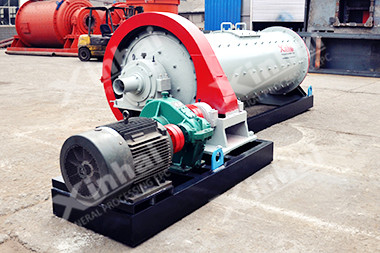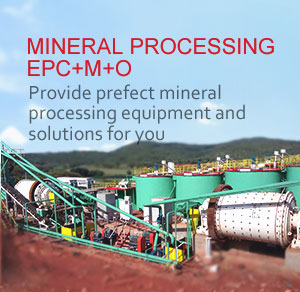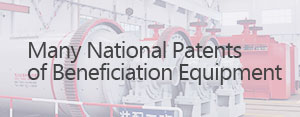- Home
- About
-
Mineral Processing EPC+M+O

Providing optimized solutions for your mine, one-stop service for mineral processing plant!
View details -
Product
- Grinding
- Classifying
Grinding & Classifying
- Flotation
- Gravity Separation Equipment
- Magnetic Equipment
- Gold Extraction Equipment
- Washing Equipment
Separating Process
- Thickening
- Dewatering Machine
Thickening & Dewatering
- Accessories
- Auxiliary Product
Consumables

Xinhai mineral processing equipment mainly include: grinding equipment, flotation equipment, dewatering equipment, magnetic separation equipment, and so on. Some of the equipment is Xinhai independent research and development, and has been awarded national patent. View details
-
Solutions
- Gold Tailings
- Tailings
Tailings

Gold CIP Production Line adsorbs gold from cyaniding pulp by active carbon including 7 steps: leaching pulp preparation, cyaniding leaching, carbon adsorption, gold loaded carbon desorption, pregnant solution electrodeposit, carbon acid regeneration, leaching pulp. View details
- Case
-
News
- Contact
Chrome Wash Plants: Science, Cost & Regional Insights
2025-06-12 XinHai Views (406)Let’s be real—chrome wash plants aren’t exactly cocktail party conversation, but they’re kinda the unsung heroes behind your kitchen knives, car parts, and that shiny fridge you’ll never clean. These things basically take raw chromite ore (yeah, the FeCr₂O₄ stuff) and turn it into the good stuff stainless steel manufacturers drool over. With the world’s appetite for ferrochrome growing (blame your neighbor’s new appliances), everyone’s scrambling to build smarter, cheaper chrome processing setups. South Africa and Rustenburg? Heavy hitters in this game.

The Nerdy Bits: How Chrome Wash Plants Actually Work
Alright, so at its core, a chrome wash plant is just a fancy way of separating the good stuff (chromite) from the junk (waste rock). Gravity does most of the heavy lifting here because chromite’s way denser than the useless bits. The basic steps? Smash up the ore, maybe grind it a bit, then run it through spiral chutes or jigs where the heavy bits sink and the light bits get tossed. Sometimes, they’ll toss in magnetic separation for a final polish. Dewatering and drying come last, or you’re just shipping mud. Recovery rates? Honestly, they swing between 40 and 60 percent depending on how fancy your setup is and what you’re feeding it.
Types of Chrome Wash Plants (Because One Size Never Fits All)
You’ve got options. Modular plants are like the IKEA of chrome processing—just drop ‘em where you need ‘em. Good if you’re in the middle of nowhere. Stationary plants? Those are built for the long haul, bigger, and not moving anytime soon. Mobile plants? Perfect if you’re chasing the next hot spot or running a smaller operation. And don’t even get me started on the difference between alluvial chrome and hard rock. The flow sheets need tweaking for each.
Why South Africa’s the Chrome King
If chrome was a Marvel universe, South Africa would be the main character. The country sits on more than 70% of the planet’s chromite reserves, most of it hiding out in the Bushveld Complex and surrounding areas. So, you’ve got top-tier infrastructure, a workforce that actually knows what they’re doing, and a bunch of plants—big and small—running like clockwork.

Hotspots? Think:
Bushveld Igneous Complex
Steelpoort Valley
Rustenburg Belt
Zooming in on Rustenburg
Rustenburg’s basically the Silicon Valley of chrome washing. Tons of high-grade ore, killer infrastructure, and enough local expertise to make things run smooth. You’ll see all sorts of plants here, from massive industrial setups to quick-and-dirty mobile units. Plus, the mines are close, power and water aren’t a nightmare, and the workforce knows their stuff.
What’s It Gonna Cost?
Nobody likes talking money until they have to. Here’s the (very rough) math:
CAPEX (stuff you gotta buy up front):
Crushers and screens: $30k–$100k
Spirals/jigs: $20k–$80k
Dewatering/drying: $10k–$50k
Infrastructure (getting water/power): $50k and up
OPEX (what you keep paying):
Labor (depends where you are)
Power and water (spoiler: not cheap)
Parts that wear out
Waste management (don’t ignore this)
So, bottom line? Tiny plants can be done for $80k–$250k, while mid-size ones run $300k–$1M. Big boys? You’re looking at $2M and up.
Building One—The Short Version
You can’t just plop a plant anywhere. First, figure out your orebody—what’s in it, how much, and what’s the best way to get the chrome out. Then design your process, buy the right machines, and deal with all the paperwork (South Africa’s big on water licenses, environmental impact approvals, and safety).

Is It Worth It?
Yeah, the chrome market is still hot, thanks to China, India, and Europe gobbling up stainless steel. South Africa pushes local processing, so there’s incentive, and you can export ferrochrome if you’re into that. But, not all sunshine: prices bounce around, electricity is crazy expensive, and you gotta handle your waste responsibly or face the regulators.
The Wrap
Chrome wash plants: not glamorous, but absolutely crucial if you want stainless steel anything. South Africa (with Rustenburg leading the pack) is the place to be if you’re looking to invest or operate. As long as you get the science, costs, and local quirks, you’re set. Whether you’re a numbers guy, an engineer, or just someone with deep pockets and a dream, chrome beneficiation is where the action’s at—messy, profitable, and just a bit underrated.
What Is the Difference Between CIP and CIL Gold
... [more]
Gold CIP Process: Principles, Flowsheet, Plant Design, and Best Practices
... [more]
Related Article
- Magnetic Separation in Iron Ore Beneficiation
- Chrome Ore Beneficiation Solutions from Xinhai – Efficient, Eco-Friendly, and Customized
- Mining Magnetic Separation
- Comprehensive Guide to Chrome Ore Beneficiation Technology
- Ball Mill Machine
- What is Lithium Processing Technology
- Mineral Processing Technology
- What are the Technologies for Lithium Production
- Gold Heap Leaching Summery
- How Hard Rock Lithium Processing Works: Mine to Market
Mineral Processing EPC
Solutions
CONTACT US
- Tel: 0086 15901320633
- Fax: 0086 10 59621207
- Email: mhxu@xinhaimining.net
© 2017 Shandong Xinhai Mining Technology & Equipment Inc. Technical Support: Beijing Xinhulian Technology Co., Ltd.
Factory Address: No. 188, Xinhai Street, Fushan high-tech industrial development district, Yantai, Shandong, China






